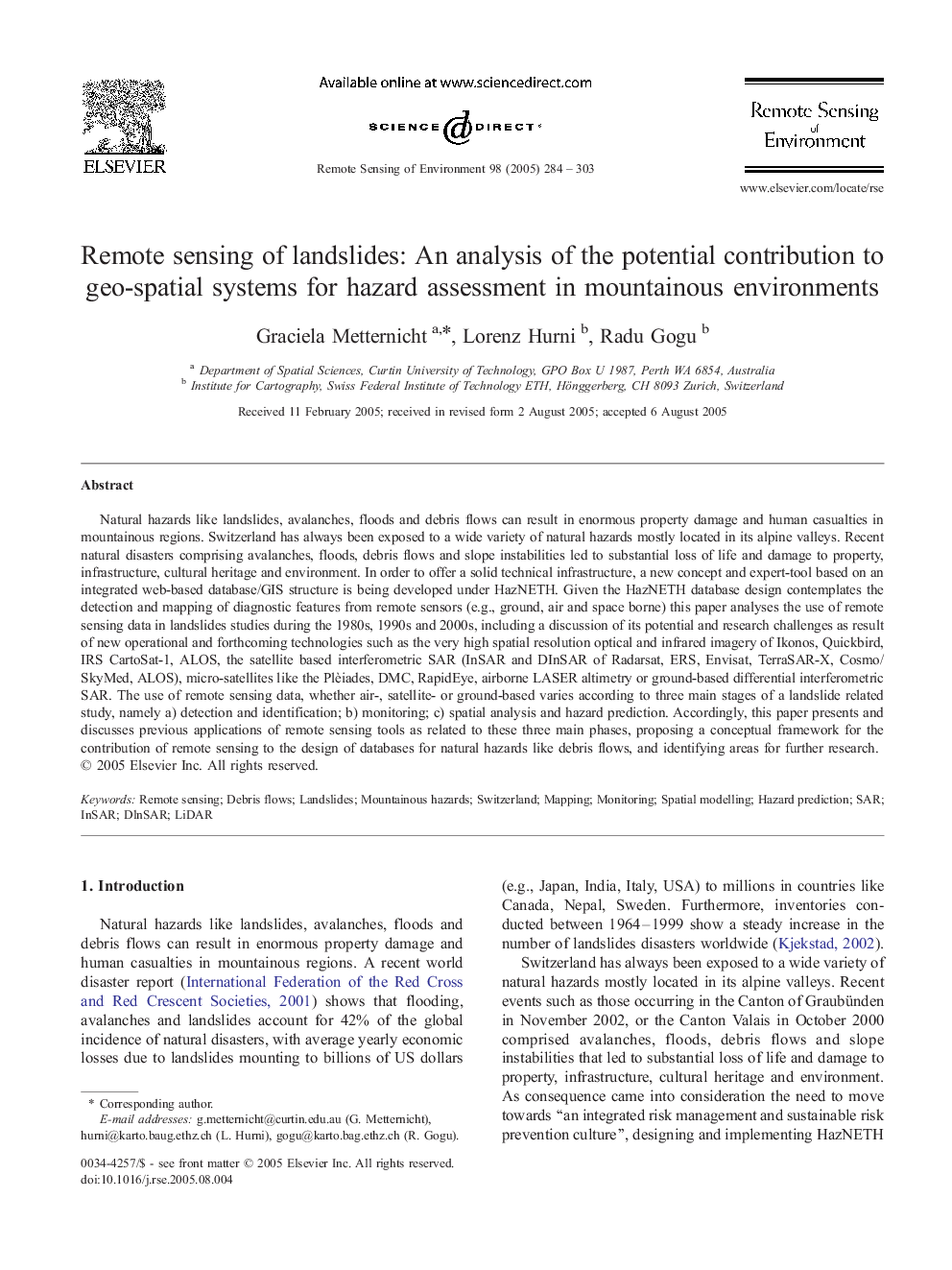| کد مقاله | کد نشریه | سال انتشار | مقاله انگلیسی | نسخه تمام متن |
|---|---|---|---|---|
| 10114086 | 1621382 | 2005 | 20 صفحه PDF | دانلود رایگان |
عنوان انگلیسی مقاله ISI
Remote sensing of landslides: An analysis of the potential contribution to geo-spatial systems for hazard assessment in mountainous environments
دانلود مقاله + سفارش ترجمه
دانلود مقاله ISI انگلیسی
رایگان برای ایرانیان
کلمات کلیدی
موضوعات مرتبط
مهندسی و علوم پایه
علوم زمین و سیارات
کامپیوتر در علوم زمین
پیش نمایش صفحه اول مقاله

چکیده انگلیسی
Natural hazards like landslides, avalanches, floods and debris flows can result in enormous property damage and human casualties in mountainous regions. Switzerland has always been exposed to a wide variety of natural hazards mostly located in its alpine valleys. Recent natural disasters comprising avalanches, floods, debris flows and slope instabilities led to substantial loss of life and damage to property, infrastructure, cultural heritage and environment. In order to offer a solid technical infrastructure, a new concept and expert-tool based on an integrated web-based database/GIS structure is being developed under HazNETH. Given the HazNETH database design contemplates the detection and mapping of diagnostic features from remote sensors (e.g., ground, air and space borne) this paper analyses the use of remote sensing data in landslides studies during the 1980s, 1990s and 2000s, including a discussion of its potential and research challenges as result of new operational and forthcoming technologies such as the very high spatial resolution optical and infrared imagery of Ikonos, Quickbird, IRS CartoSat-1, ALOS, the satellite based interferometric SAR (InSAR and DInSAR of Radarsat, ERS, Envisat, TerraSAR-X, Cosmo/SkyMed, ALOS), micro-satellites like the Plèiades, DMC, RapidEye, airborne LASER altimetry or ground-based differential interferometric SAR. The use of remote sensing data, whether air-, satellite- or ground-based varies according to three main stages of a landslide related study, namely a) detection and identification; b) monitoring; c) spatial analysis and hazard prediction. Accordingly, this paper presents and discusses previous applications of remote sensing tools as related to these three main phases, proposing a conceptual framework for the contribution of remote sensing to the design of databases for natural hazards like debris flows, and identifying areas for further research.
ناشر
Database: Elsevier - ScienceDirect (ساینس دایرکت)
Journal: Remote Sensing of Environment - Volume 98, Issues 2â3, 15 October 2005, Pages 284-303
Journal: Remote Sensing of Environment - Volume 98, Issues 2â3, 15 October 2005, Pages 284-303
نویسندگان
Graciela Metternicht, Lorenz Hurni, Radu Gogu,